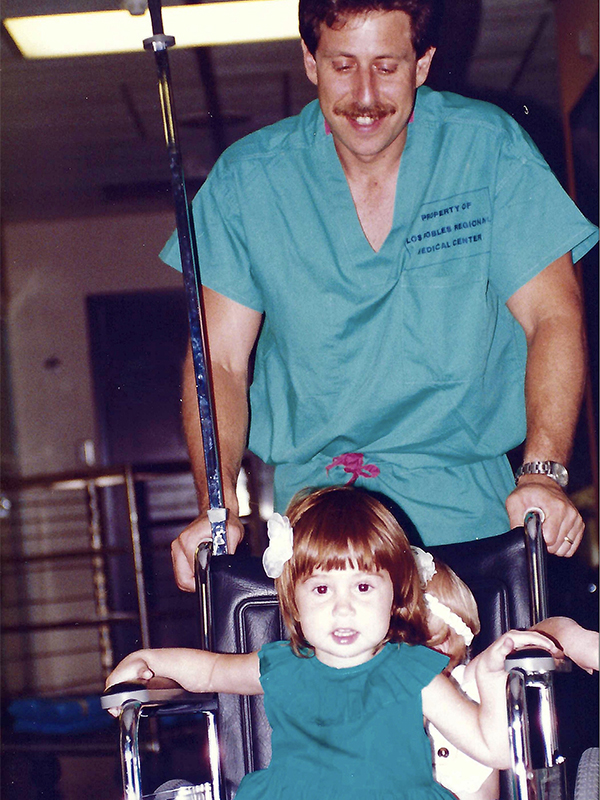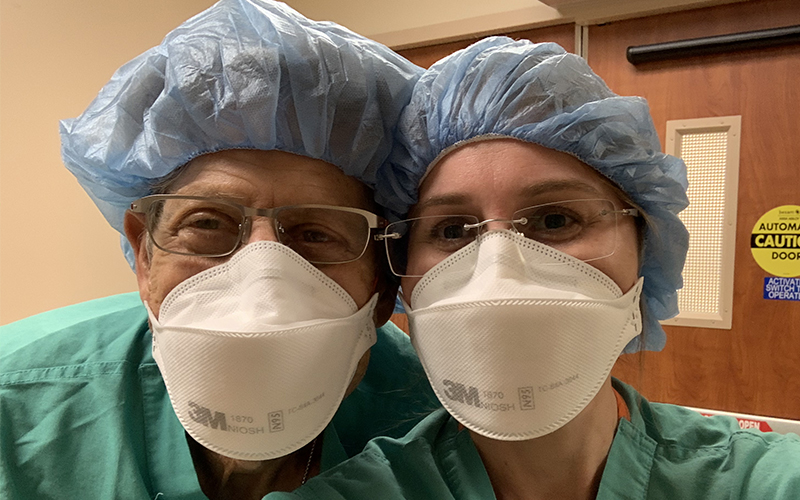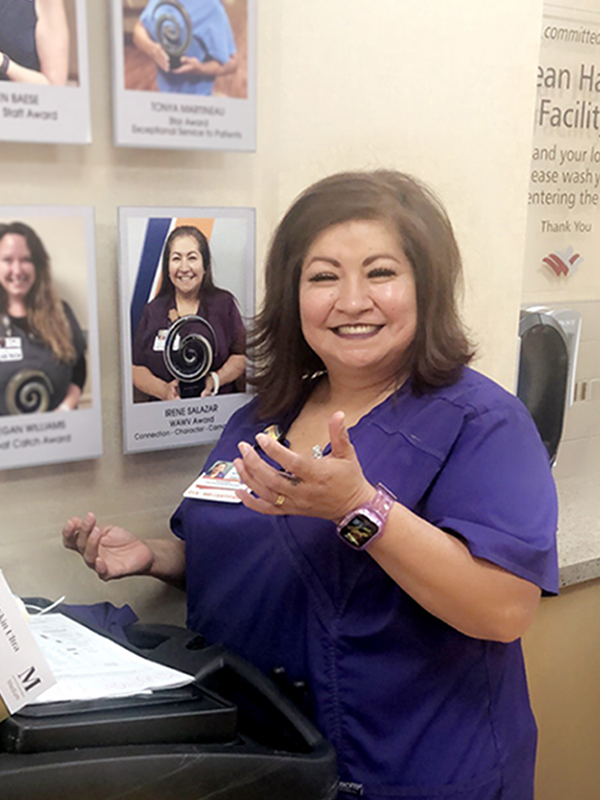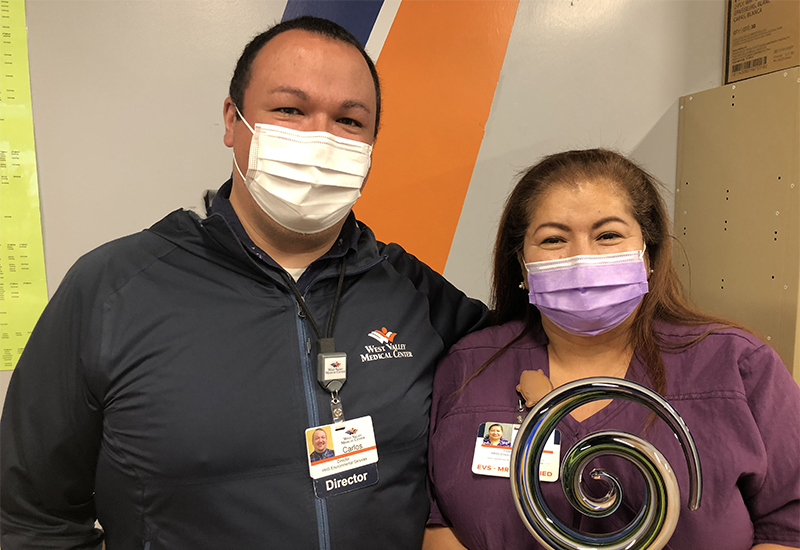Irene Salazar had an established career as a cosmetologist when she put it on hold to care for her husband when he had a stroke. She was his caregiver until he was well enough to return to work. But instead of returning to her former career, she joined the environmental services team as a housekeeper at West Valley Medical Center in Caldwell, Idaho.
Since assuming this new role two years ago, she’s come to love it for many of the same reasons she enjoyed her previous work: people.
“I have a service-oriented heart,” says Irene, an active church member who tries to model her Christian faith. “It’s not just housekeeping. It’s not just a job. It just blesses me that I get to go around and say, ‘Good morning. Good morning. How are you?’ I get to bring love and joy to people, and they delight in it.”
From the start, Irene noticed the lobby wall that held photos of West Valley colleagues recognized for demonstrating a commitment to a positive workplace culture. She imagined her own photo on the wall. Now her dream has come true.
A physician nominated Irene for the We Are West Valley award after witnessing her assist a patient with their shoes one day. Five other colleagues had also nominated Irene for the quarterly recognition. The hospital reviews all quarterly honorees, then selects an annual winner. This year, it was Irene.
“I couldn’t believe it. I was shocked. I have never gotten recognition like this — ever,” she says. “When I started on the night shift, I cleaned the lobby first and when I would dust the award wall, I would pray and say, ‘Lord, I know an EVS (colleague) can do it.’”
Her supervisor, Carlos Vazquez, says, “When I first met Irene, she was that type of person who made you feel like your mom was there. She was able to jump in and take care of everything and we have seen that continue to blossom. She rises to the occasion every single day.”



 Amy Rushton, Vice President of Behavioral Health for HCA Healthcare, recently spoke about mental health awareness and how to practice self-care at work.
Amy Rushton, Vice President of Behavioral Health for HCA Healthcare, recently spoke about mental health awareness and how to practice self-care at work.



 Tomorrow is Juneteenth and has now officially been designated a federal holiday, the date marketing the end of slavery in the United States. The Emancipation Proclamation officially went into effect on January 1, 1863. But, it wasn’t until June 19, 1865, when Union soldiers arrived in Galveston, Texas to announce the end of the Civil War that those enslaved in Texas learned of their freedom.
Tomorrow is Juneteenth and has now officially been designated a federal holiday, the date marketing the end of slavery in the United States. The Emancipation Proclamation officially went into effect on January 1, 1863. But, it wasn’t until June 19, 1865, when Union soldiers arrived in Galveston, Texas to announce the end of the Civil War that those enslaved in Texas learned of their freedom. "I
"I 
